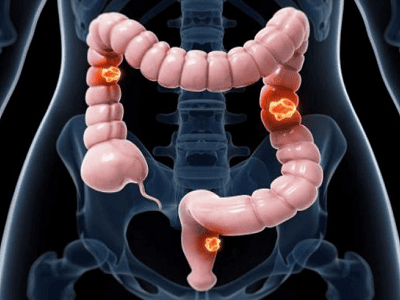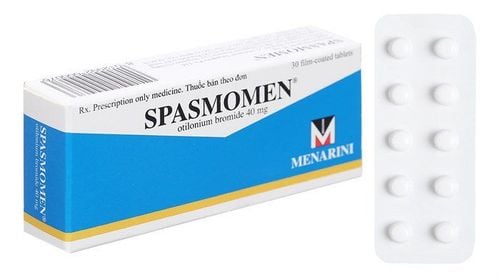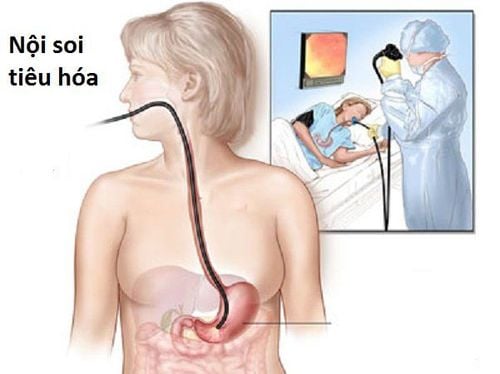This is an automatically translated article.
Article by Doctor Nguyen Ngoc Khanh - Head of Department of Gastroenterology - Urology - Robotic Surgery & Pediatric Surgery, Department of General Surgery - Vinmec Times City International Hospital.
In Vietnam, according to 2018 statistics with a population of 96,491,142: The annual number of new cancer cases is 164,671, the incidence is 140/100,000 person-years, the number of deaths is 114,871 people/year. In which colorectal cancer is: 14,733 cases (8.9% of all cancers).
1. Signs of colorectal cancer
Survival rate after treatment for colorectal cancer varies by stage: USA: The overall 5-year survival rate is 65%, of which if detected early in stage I is 95%, 60% in stage III, 10% in stage IV have metastases.
Colorectal cancer (CRC) often goes unnoticed because early symptoms are poor and cause little attention to the patient. The following symptoms can be signs of colorectal cancer, but are often late signs of the disease:
Change in bowel habits: alternating between constipation and diarrhea. Blood in stool. Mucus in stool. Cramping abdominal pain, gas, bloating = signs of intestinal obstruction due to large tumor blocking the colon lumen. Feeling that you do not pass all stool, often have a feeling of wanting to have a bowel movement. Tired. Weight loss, anemia for unknown reasons.
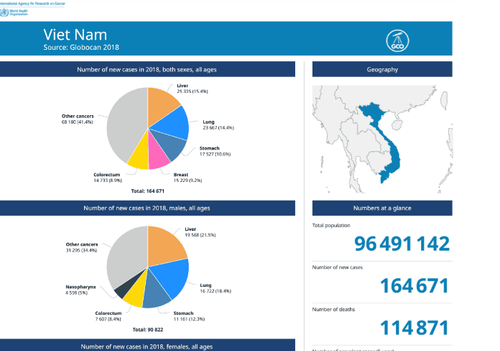
Số liệu về ung thư tại Việt Nam
2. The role of colorectal cancer screening
Late CRC is a preventable condition with early detection through widely used screening programs.
Full implementation of colorectal cancer screening guidelines has been shown to reduce colorectal cancer mortality in the United States by approximately 50%; even more so if applied in countries where screening tests are difficult. New and more comprehensive screening strategies are also needed.
In the United States, colorectal screening guidelines have been issued by the following organizations:
American Cancer Society (ACS), US Multi-Society Task Force on Colorectal Cancer, and American College of Radiology U.S. Preventive Services Task Force (USPSTF) American College of Physicians (ACP) American College of Gastroenterology (ACG) National Comprehensive Cancer Network (NCCN) Although all guidelines recommend routine screening for colorectal cancer and adenomatous polyps in adults are asymptomatic starting at age 50, but they vary in screening frequency and age to stop screening, as well as screening methods. For high-risk patients, recommendations vary regarding the age at which to start screening, as well as the frequency and method of screening.
For simplicity, ease of application and no confusion, the article presents the American Cancer Society (ACS) Screening Guidelines.
3. American Cancer Society Colorectal Cancer Screening Guidelines
Recommendations:
Adults 45 years of age and older with moderate risk of colorectal cancer should be screened regularly by: 1. Highly sensitive stool test or 2. Structural morphological examination (endoscopy), depending on patient preference and availability of testing facilities. As part of the screening process, all positive results on non-endoscopic screening tests (fecal tests) must be followed up with a prompt colonoscopy. Starting screening at age 45 is a qualified recommendation. Screening at age 50 and older is a strong recommendation. In healthy, intermediate-risk adults with an expected survival of more than 10 years, screening for colorectal cancer up to age 75 is a qualified recommendation. Clinicians individualize colorectal cancer screening decisions for people 76 to 85 years of age based on preference, life expectancy, health status, and prior screening history - qualified recommendation The clinic does not recommend that people over 85 years of age continue to be screened for colorectal cancer - qualified recommendation. Screening options for colorectal cancer:
Stool tests: Annual stool immunochemistry test Annual high-sensitivity red blood cell stool test Multi-target DNA test every 3 years Structural examination ( colonoscopy): Colonoscopy every 10 years Colonoscopy every 5 years Sigmoidoscopy every 5 years
4. Other Reference Guide
Other guides for reference such as: National Comprehensive Cancer Network (NCCN). The NCCN has issued separate guidelines for intermediate- and high-risk populations. For the general population, recommendations are roughly similar to those of the American Cancer Society, the US Multi-Society Task Force on Colorectal Cancer, and the American College of Radiology.
Mean NCCN risk criteria were as follows:
Age ≥50 No history of adenomatous polyps, sessile polyps, or colorectal cancer No history of inflammatory bowel disease (IBD) No family history of colorectal cancer or a history of confirmed advanced adenocarcinoma itself (ie, high dysplasia, size 1 cm, papillary or tubular-papillary histology) or broad-legged-serrated margin polyps (sessile serrated) progression (≥1 cm, any dysplasia) NCCN increased risk criteria for subjects with any of the following:
Personal history of adenoma or polyposis wide-serrated margin. Personal history of colorectal cancer Inflammatory bowel disease (ulcerative colitis, Crohn's disease) There is a family history. The NCCN High-Risk Criteria were subjects with the following:
Lynch syndrome (inherited colorectal cancer) Classic familial adenomatous polyposis (FAP) Multiple sclerosis Attenuated familial adenomatous polyposis (AFAP) MUTHYH-associated polyposis (MAP) Peutz-Jeghers syndrome (PJS) Juvenile polyposis syndrome (JPS) Serrated polyposis syndrome (SPS) ) Colonic adenomatous polyps of unknown etiology Cowden syndrome/hamartoma tumor syndrome PTEN Li-Fraumeni syndrome Individuals with one or more of the following criteria should be further evaluated for multiple polyposis syndromes:
Persons with more than 10 adenomatous polyps detected from (FAP, AFAP, MAP and other rare genetic causes of adenomatous polyposis) Person with more than 2 hamartomatous polyps (PJS, JPS and Cowden/PTEN hamartoma tumor syndrome) People with more than 5 serrated polyps proximal to the sigmoid colon (SPS) Family members with the syndrome are at risk elevation associated with colorectal cancer, with or without the mutation. People with desmoid tumors, hepatoblastomas, cribriformmorular variants of papillary thyroid tumors (FAP, AFAP, MAP)
5. Risk-based screening
An international panel of experts published guidelines for risk-based colorectal cancer screening in adults who are:Age 50-79, No previous screening Asymptomatic colorectal cancer and Life expectancy is estimated to be at least 15 years. For those with an estimated 15-year colorectal cancer risk of less than 3%, the panel recommends no screening (weak recommendation). For individuals with an estimated 15-year risk greater than 3%, the panel recommends screening with one of the following options: FIT yearly FIT every 2 years 1 sigmoidoscopy Colonoscopy 1 time Calculation of colorectal cancer risk/15 years was performed using the online QCancer tool. (Note that this tool was developed for the UK.)
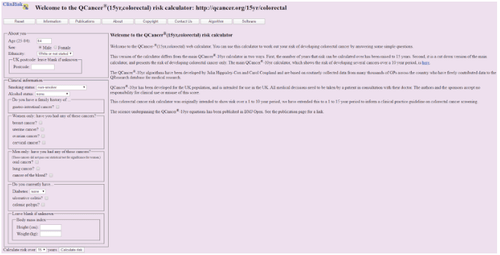
Công cụ QCancer trực tuyến sàng lọc tính nguy cơ của ung thư đại trực tràng.
For advice and to book an appointment, you can contact HERE
Reference:
Colorectal cancer screening for average-risk adults: 2018 guideline update from the American Cancer Society Bacsyphauthuatsurgeon.wordpress.com. Emedicine.medscape.com






